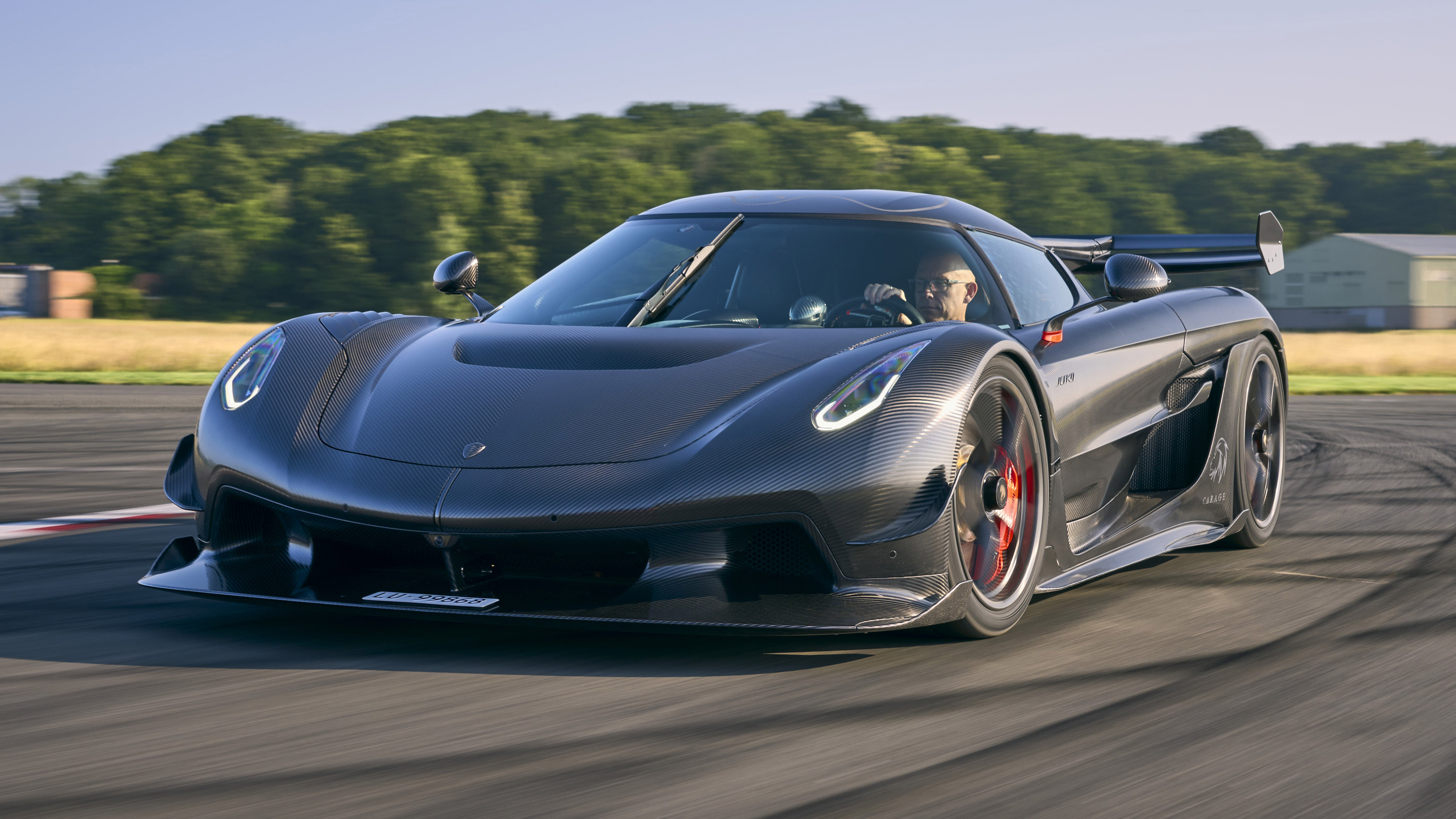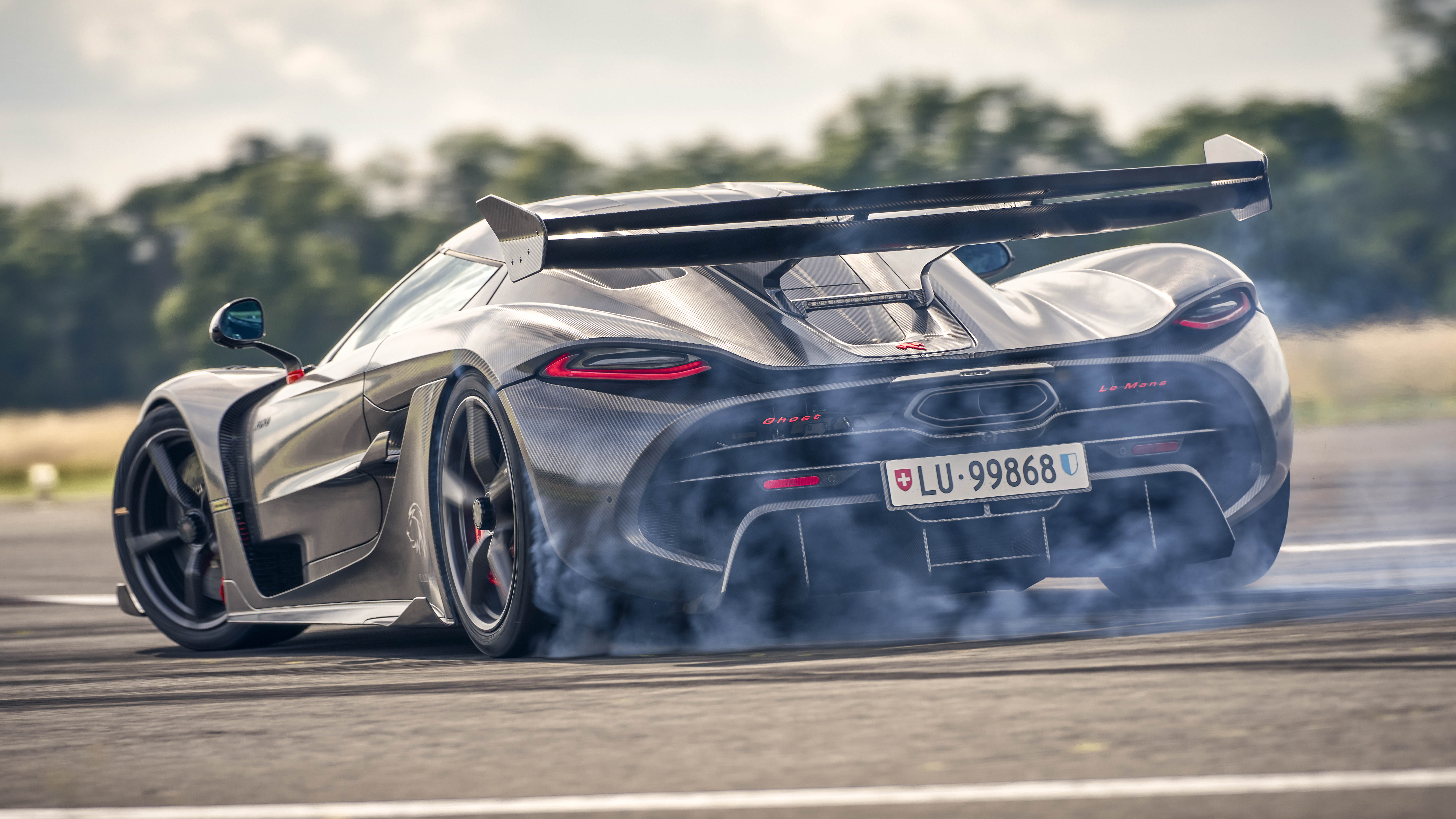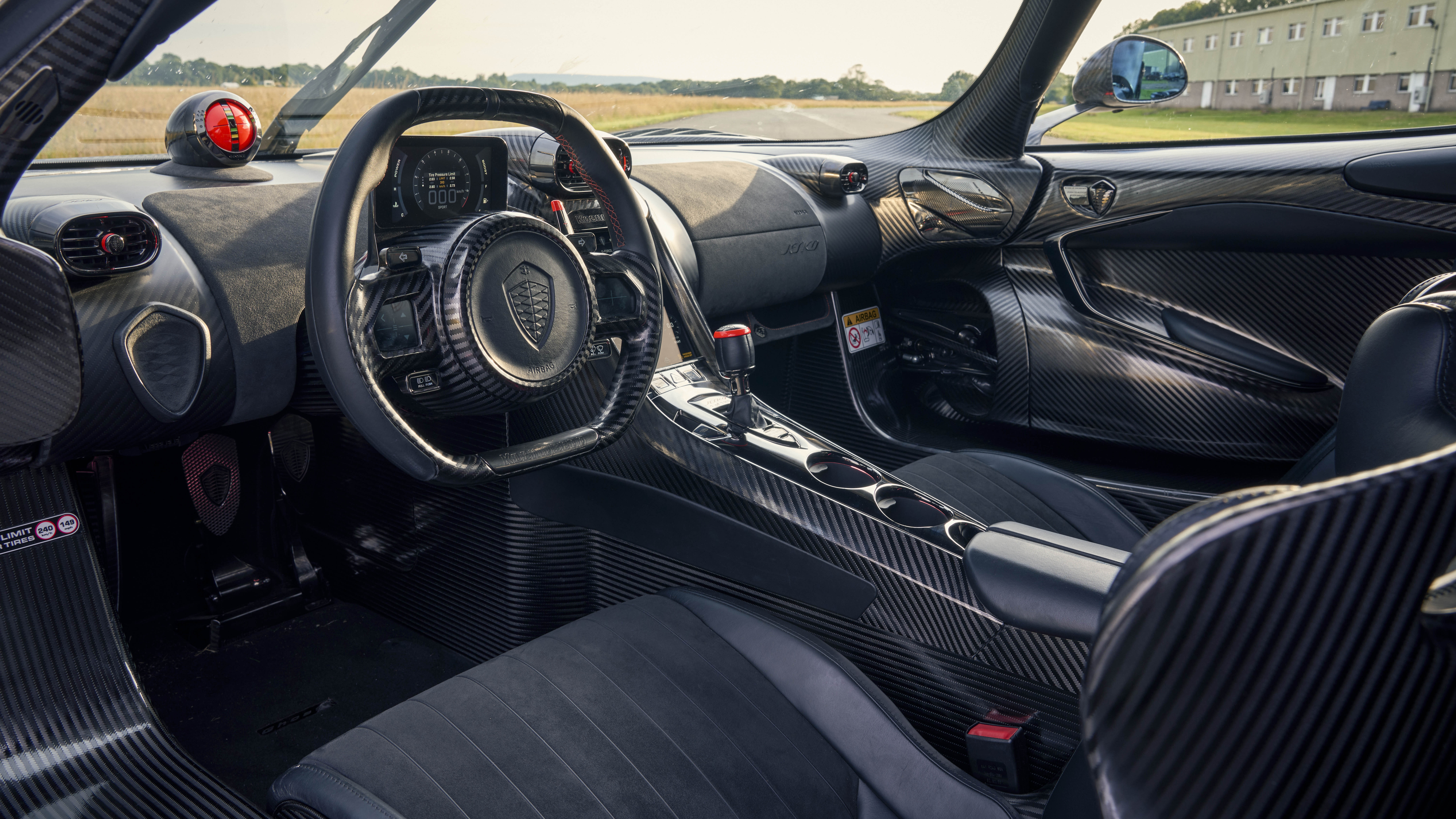
Koenigsegg Jesko review
Driving
What is it like to drive?
We’ve gone on record before as saying there’s not much faster than a McLaren 750S or Ferrari 296 GTB, there’s not really anything beyond that level of performance. We were wrong. Boy we were wrong.
It takes a 296 GTB 5.50secs to accelerate from 100 to 150mph. The Jesko Attack does it in little more than half that. Above 100mph, that’s where this gets into its stride. Once it has stopped wheelspinning, basically. 100-200mph takes 8.16secs. That’s faster than those icons of Instagram speed, the BMW M4 and Audi RS3, can do 0-100mph. Think of the amount of air that has to be pushed out of the way, the force that has to be applied to the tarmac, the friction and drag. At 170mph there’s an extra tonne of weight pushing down on it. And this, don’t forget, is the slow Jesko.
GIVE ME SOME MORE FIGURES TO DIGEST
You can read all about it soon, but how about the fact it went through the end of the quarter mile – that’s 402 metres from a standing start – at 170mph. That’s 20mph faster than a Ferrari SF90, well over 30mph quicker than a 911 Turbo S.
You might think there’s no relevance in a car that only really gets going once into three figures – and for daily driving you’d arguably be right – but whoever accused hypercars of being logical or making rational sense? These come from a realm beyond road-going reality.
BUT YOU ALSO SAID IT WAS LIKE A MCLAREN OR FERRARI TO DRIVE.
And we meant it. We’ve driven hypercars that don’t live up to expectations, that are exciting for the wrong reasons, but this isn’t one of them. Despite its extraordinary power and acceleration, it instils huge confidence in the driver. That’s rarely the case. Often the compromises needed to make a car so extraordinarily fast remove a lot of the dexterity and feel that actually makes them enjoyable to drive. Not here.
The Jesko brakes beautifully from dizzying speeds with not a trace of steering fidget despite the huge compression going through the front wheels. The pedal is gorgeous to use, accurate and full of feel. And as you trail off the brakes to turn in, the steering is there, already feeding back information about grip. Mid-corner there’s deft balance, and on exit you can accurately juggle throttle, steering and traction. In other words you can drive the Jesko fast and hard and it won’t bite.
WHAT ABOUT WHEN IT STARTS SLIDING AROUND? THAT MUST BE PRETTY FULL ON
Have you seen the film we made? Initially we found it unsettling, like swimming in black water, that sense of trepidation and fear that sends shivers up your legs. In this case what 1,600bhp might be about to do to the rear wheels. Hard to be smooth on the throttle when you’re convinced you’re baiting Jaws.
But actually the engine is so responsive, so crisp and controllable that you can meter out the power very accurately indeed. So, yes, it will power oversteer and do so controllably. And you don’t see a Koenigsegg do that very often.
HOW’S THE ENGINE TO USE?
Koenigsegg did look at using – another innovation – a proprietary air injection system that livened up the turbos to reduce lag, but the idea was scrapped because it was decided turbo response was plenty sharp enough already.
We agree. There is a little bit of lag to overcome, but that does two things. It gives you time to anticipate and get excited about what’s to come. And it also gives you the chance to back out. This is important. You need that fraction of a second to consider precisely what’s about to happen. Because it is entirely extraordinary.
There are other things to help you here. The throttle is beautifully accurate and has a lovely long travel, say you’re not just smacking it straight to the stops without thinking. Instead, you have to reach a bit to get full throttle. And then there’s the noise. It’s starts rowdily with a churn from the starter and then a bark of largely unsilenced V8, thrumming with purpose at idle. On the move it’s ever-present, full of potency, a dominating presence. Let it rip and you’re automatically less aware of the noise because you’re now concentrating entirely on the scenery spooling through the wraparound windscreen. It’s vicious, angry, restless sound, and there’s nothing artificial about the bangs and explosions on the overrun. You’re towing November the fifth behind you.
AND WHAT’S THE LIGHT SPEED GEARBOX LIKE?
Much better to use than the single gear transmission in the Regera. That CVT-like sensation was an acquired taste. But it’s still not perfect. You, like me, probably like to pull paddles yourself, but having nine ratios means stacking them very close together. Fine if you’re just doodling about on the road, but on track the acceleration is so rapid that your fingers and brain can’t keep up with the rate the engine is chewing through gears until you’re in fifth.
So leave it in auto, the shifts are still as punchy and incisive as you could possibly want, you’ve just got to realise that in a car as prodigiously fast as this, there are some things a puny human can’t keep up with.
WHAT’S IT LIKE ON ROAD?
Our experience there is more limited, but it’s size and width makes it awkward to manage despite its very accurate and feelsome (if light) steering. The ride is best described as positive – not uncomfortable because the quality of the damping is superb, but this is not a refined hypercar in the same vein as a Chiron or Utopia. The bare carbon cabin echoes noise around, and information tingles in from the chassis through the seat, pedals and steering.
But on track, it’s a masterpiece. Really, genuinely capable, tied down and trustworthy. Stability is awesome, the precision under braking and into corners is exceptional and you feel the downforce working to hold everything steady. In most of the cars the penalty of that is limited acceleration as speeds rise. Here that’s hardly an issue. You’ve got the power to push on through.
Featured

Trending this week
- Car Review
BMW iX3






